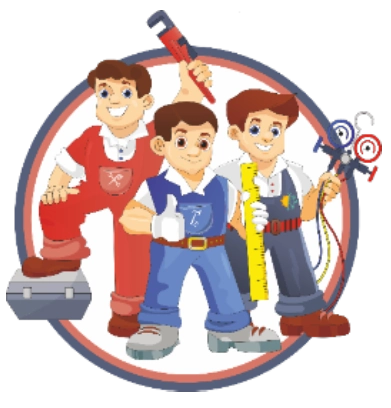Yellow brass pipes, valves, and fittings have recently come under scrutiny, and for good reason. Many homeowners are facing serious issues stemming from the use of these materials in their plumbing systems. The problem is becoming so widespread that lawsuits against manufacturers of yellow brass components are on the rise. If your home contains these fittings, it’s essential to understand the potential damages they can cause and how to address them before they escalate into more costly repairs.
What is Yellow Brass?
Yellow brass is an alloy primarily composed of copper and zinc, with over 30% of the alloy being zinc. It has been commonly used in plumbing systems over the past 15 years because:
- It’s more affordable than traditional materials like copper, making it an attractive option for developers and builders.
- It’s easier to install and machine, which reduces labor costs during construction.
- Yellow brass valves and fittings are also often used to connect PEX pipes, further lowering the overall installation cost for homeowners and contractors.
While yellow brass may have seemed like a cost-effective choice initially, the long-term consequences have proven problematic for many homeowners. One of the most significant issues is a process called dezincification, which weakens the pipes and leads to a range of plumbing problems.
Issues Related to Yellow Brass: Understanding Dezincification
Dezincification is a chemical reaction that occurs when zinc leaches out of the yellow brass alloy due to constant exposure to water. As the zinc erodes, it leaves behind copper with reduced mechanical strength, resulting in pipes and fittings that are significantly more vulnerable to damage. The primary visual indicator of dezincification is the accumulation of a white, powdery substance inside the fittings, which is zinc oxide.
Here are some of the key problems caused by dezincification in yellow brass fittings:
- Weakening of the Plumbing System
- As dezincification progresses, the structural integrity of your plumbing system diminishes. The remaining copper is no longer strong enough to withstand the pressure of daily water use, leading to potential system failures. This often results in leaks or, in severe cases, the collapse of the plumbing infrastructure.
- Water Damage to Walls, Floors, and Ceilings
- Over time, weakened pipes may fail, causing water to leak into walls, floors, and ceilings. Water damage can lead to mold growth, rot, and costly repairs. This can be especially problematic if the damage remains undetected for an extended period, exacerbating the issue.
- Blocked Water Flow
- As zinc erodes from the pipes, zinc oxide deposits accumulate inside the pipes. These deposits restrict water flow, reducing water pressure and making it more difficult for appliances like water heaters, dishwashers, and washing machines to operate efficiently.
How to Identify Problems with Yellow Brass Fittings
Detecting issues caused by yellow brass pipe fittings can be challenging, as the damage often progresses slowly and without obvious signs. However, there are several key indicators that homeowners can watch for to recognize potential problems:
- Mold Formation
- The appearance of mold in unexpected places, such as around the kitchen entry or the back side of laundry rooms, can signal a hidden leak. Mold thrives in moist environments, and a leaking yellow brass pipe may be providing the perfect breeding ground for it.
- Pinhole Leaks
- Small pinhole leaks in pipes are often the first visible sign of dezincification. These tiny leaks may seem insignificant at first, but they can quickly grow and lead to more significant water damage. It’s important to address these leaks as soon as they’re spotted to avoid larger plumbing failures.
- White Powdery Deposits
- The buildup of white powder (zinc oxide) on the outside of pipes or fittings is a tell-tale sign of dezincification. If you see this powdery residue, it means the zinc in the alloy is leaching out, and the pipe’s structural integrity is already compromised.
- Reduced Water Pressure
- If your home’s water pressure has noticeably dropped, especially when it comes to appliances like water heaters or dishwashers, it could indicate a blockage caused by zinc oxide deposits. Over time, these deposits can clog pipes and restrict water flow, making your plumbing system inefficient.
The Costs of Ignoring Yellow Brass Pipe Issues
Addressing issues with yellow brass pipes can be expensive, but ignoring them can lead to even more severe and costly damages. The longer you wait to fix or replace these fittings, the more likely it is that you’ll face:
- Extensive water damage: Leaks can spread behind walls, floors, and ceilings, requiring costly repairs.
- Mold remediation: Mold growth due to water leaks can be hazardous to your health and expensive to remove.
- Frequent pipe failures: As the system continues to weaken, you may experience multiple pipe failures, each requiring emergency repairs.
Ultimately, the best solution is repiping – replacing all the compromised yellow brass fittings and pipes with more reliable materials like copper or PEX.
Repiping: The Only Long-Term Solution
If you’ve identified any of the warning signs related to yellow brass fittings, it’s time to consider repiping your home. Repiping involves replacing the existing yellow brass pipes with more durable materials that won’t suffer from dezincification.
While repiping may seem like a significant investment, it is a long-term solution that can save you from the ongoing costs of frequent repairs and water damage. Here’s why repiping is the best course of action:
- Improved Water Pressure: Replacing old yellow brass fittings with copper or PEX will restore your home’s water pressure to optimal levels.
- Eliminate Leaks and Water Damage: By replacing weakened pipes, you can prevent future leaks, avoiding costly water damage to your home.
- Better Water Quality: Dezincification can lead to contaminants in your water supply, affecting its taste and safety. Repiping ensures your water is clean and safe for consumption.
- Increased Home Value: Modernizing your home’s plumbing system with reliable materials can boost the value of your property, making it more attractive to potential buyers.
Conclusion
Although yellow brass pipe fittings were once seen as a cost-effective solution for plumbing systems, the long-term damage they cause makes them a liability for homeowners. The process of dezincification weakens the pipes, leads to leaks, and clogs your system with zinc oxide deposits. Ignoring these issues can result in extensive water damage and costly repairs.
If your home contains yellow brass fittings, it’s time to consider repiping as the only long-term solution. Replacing these aging components with reliable materials like copper or PEX will save you from ongoing repairs, improve your water quality, and protect your home from further damage. Don’t wait until it’s too late – contact a professional plumber to assess your system and get started on repiping today.



